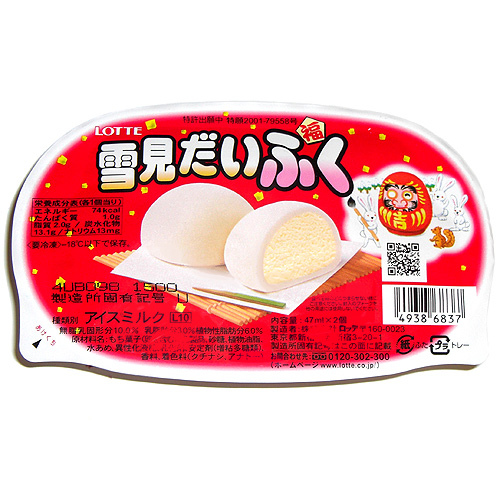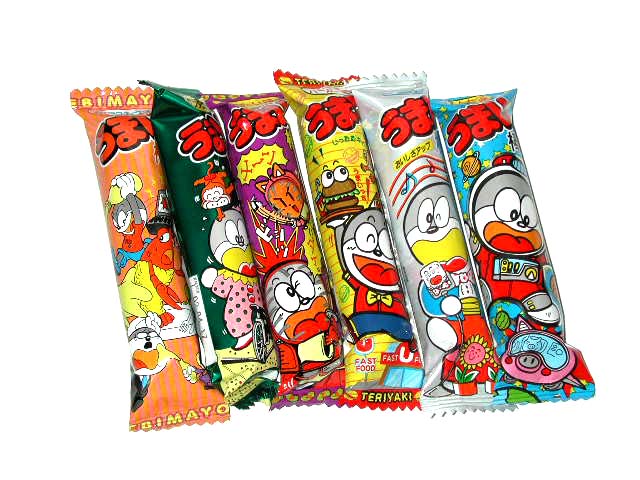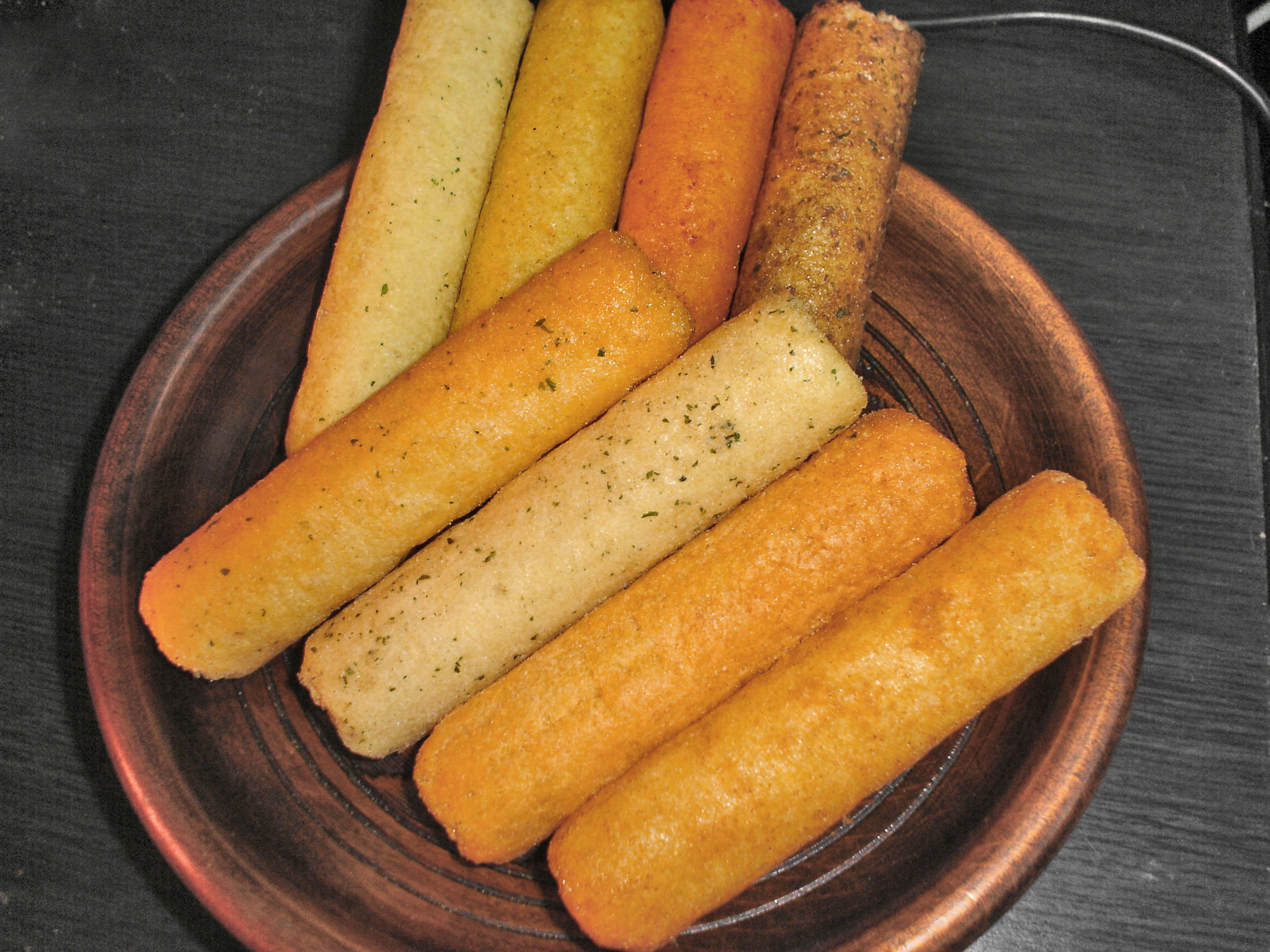We uploaded the video about foods on Youtube!!
Plz check it!!
Food
Friday, February 1, 2013
Wednesday, January 9, 2013
Yukimi-daihuku
Yukimi-daihuku(雪見だいふく) was born in 1981. This is one of the oldest ice cream product in Japan. Characteristic of the ice cream is combination of Mochi(Japanese rice cake) and vanilla ice cream. In 1981, nobody imagined this combination of those foods. Mochi is Japanese traditional food and ice cream came from western culture. It seemed that combining two foods that belong with two different culture into one product would make strange taste. However, Yukimi-daihuku became popular product quickly and it is steel popular too. Yukimi-daihuku include Mochi and Mochi is basically eaten in winter season. That is why, the product did not decrease its sales number even if it was in winter season and the product totally changed stereo type idea that ice cream is eaten only in summer time and expanded market in winter season. That is, it is not too much to say that the ice cream gave big difference to history of Japanese ice cream.
President of the company that makes the ice cream is Korean guy.


President of the company that makes the ice cream is Korean guy.


Tuesday, January 8, 2013
Tangyuan
Tangyuan, also known as glutinous rice ball is one of my personal favourite
sweets. Traditionally, Tangyuan
is served in festivals and major holidays in China as the name and the shape of
it symbolizes the togetherness and completeness. It comes many regional
variations and many flavors ranging from bean paste filled to pork meat filled.
My all time favorite Tangyuan
with black sesame filings.
For
Tangyuan,
the most important thing is how to eat. Tang yuan is normally served warm
and this is how you should eat it. Pick up one soft and juicy tang yuan using a
spoon. Take a tiny bit on the doughy skin. You can watch the sesame fillings
rush out as the steam escapes from the inside at the same time. Use the tip
your tongue carefully test out the fillings to make sure it won’t burn you
alive. Once you are ready, go ahead and take a BIG bite or swallow the whole
thing. Let the creamy juicy sesame fillings explode in your mouth as you chow
down the chewy dough.
Saturday, January 5, 2013
Korean Pancake
Jeon, buchimgae, jijimgae, or jijim refer to many pancake-like dishes in Korean cuisine. Jeon is made with various ingredients such as sliced meats, poultry, seafood, and vegetables depending on the style and mixed with flour batter or coated with egg batter and then pan-fried with oil.
Jeon is commonly eaten as an appetiser, as banchan (small side dishes), or as anju (food to eat while drinking).
Jeon are sometimes eaten as a sweet dessert; one such variety is called hwajeon (literally "flower jeon").Bindaetteok (mung bean pancake), pajeon (green onion pancake), and kimchijeon are popular jeon in South Korea. The jeon name commonly follows its main ingredient.
Friday, January 4, 2013
Umai-bou

Umai-bou(うまい棒) is one of the most popular junk foods in Japan. The name umai-bou means delicious-bar. This junk food is popular because the price is very cheap. It is only 10 cent per one bar. Japanese government impose 5% excise to people so if some one buy only one Umai-bou, he or she can avoid to pay excise since 5% of 10 cent is less than 1 cent and in this case, excise is not imposed. Other than that, you can enjoy variety of tastes such as cheese, BBQ, teriyaki, chili and so on. Tens of thousands of Umai-bous are sold every day in Japan. However, it seems to be quite hard for a manufacturing company to maintain cheaper price because a size of Umai-bou is getting smaller and smaller every year. I think it was 1.3 times bigger in the past than what it is now. Some one says it is because you grown up and became bigger and so you feel Umai-bars became smaller. Other one says it is true that Umai-bar is smaller than before. Whatever.

Mapo tofu
Mapo tofu is a tofu and meat dish cooked in a spicy chilli bean sauce. Now it is a
popular dish all over the world, it is a traditional dish in Sichuan (Szechuan)
cuisine. I really love this dish and I was delighted whenever my family ordered
it. The dish packs a fiery savoury punch and we always needed more rice than
usual to enjoy all of the spicy sauce. The sauce has a numbing and lip-stinging
effect depending on how much Sichuan pepper is added, though the home cooked
version is usually toned down in terms of numbness.
Mapo tofu
can also be found in other Chinese provinces and in Korea, Japan, where the
flavor is adapted to local tastes. In Japan, where the dish is calledマーボー豆腐, it was introduced by Chen Kenmin who opened the first Sichuanese
restaurant in Tokyo in the 1950s. Instead of using only the salty and spicy
bean paste, Chen also adopted sweet bean paste in the recipe and make the dish
less spicy and less oily. In the west, the dish is often adulterated, with its
spiciness severely toned down to widen its appeal.
Málàtāng( China)
 If you have been to Beijing*, you’ve most likely come across this street scene: a bunch of people crowded around a street vendor, picking out skewers from a bubbling hot red broth. Others are standing around munching on the their bounty with a look of ecstasy on their faces. Passersby, drawn by the sight or smells or possibly even the pheromones of the people in ecstasy, join the crowd. You wonder, what is all this?
If you have been to Beijing*, you’ve most likely come across this street scene: a bunch of people crowded around a street vendor, picking out skewers from a bubbling hot red broth. Others are standing around munching on the their bounty with a look of ecstasy on their faces. Passersby, drawn by the sight or smells or possibly even the pheromones of the people in ecstasy, join the crowd. You wonder, what is all this?
Málàtāng seems to be more of a magnet than most other highly addictive street food. Most likely it’s because of the number of choices you get. Shrimp, fish balls, tofu, bean curd, lotus root, mushrooms, chicken, beef tendon, noodles, and much more get cooked in a pot of steaming broth laced with Sichuan peppers and sesame oil. You get a plate or take-out container and make your selection either blindly or informed, by asking nicely and trying to remember if there’s a chapter on animal parts in your phrasebook. No matter, because everything is cooked through and more often than not, delicious. At 1 rmb or 50 jiao per skewer, you can have a light snack for 3 rmb or stuff yourself for 10 rmb.
I got my málàtāng fix today in Nanluoguxiang, a hutong just east of the Drum & Bell Towers. I got my helping of kelp, squid and fish balls, and bean curd rolls, topped them with a sesame chilli sauce, and sat down on the stoop of a courtyard home. Hutong residents road by on their sturdy steel ol’ skool bikes. The young couple next to me were feeding each other tofu skewers. A bunch of grandmothers were cheering on a ruddy-faced toddler as he wobbled his first steps. It was one of those amazing only-in-Beijing moments that I’ll remember long after I, someday, leave the city.
*Málàtāng is originally from Sichuan province, but has spread to coastal cities like Beijing, Shanghai, and I’m sure plenty of others
Subscribe to:
Posts (Atom)





